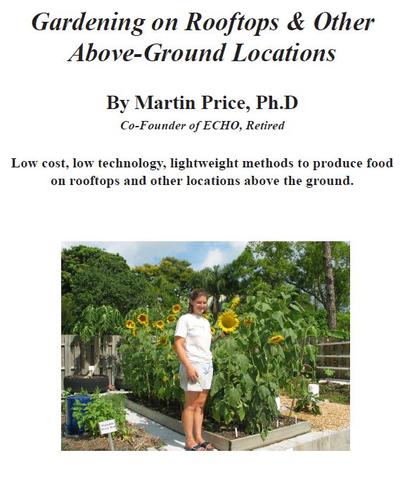Gardening on Rooftops & Other Above-Ground Locations - Martin Price
Martin Price, Ph.D

Most hunger and malnutrition around the world is not usually caused by a lack of food, although that may be changing. From the point of view of the hungry family, the cause is usually a lack of income sufficient to purchase the food. Anyone with enough income will be able to obtain food, except perhaps after major disasters or in a war zone.
There are so few options for the extremely poor. What can a family do if the national unemployment rate is over 50%, wages are a dollar or two a day, prices of food are increasing and may at times be even higher than in the USA, they have neither savings nor credit and there is no governmental safety net?
For many, an option of last resort is to find a piece of land somewhere and try to grow enough to at least keep the family alive. Hopefully there would be some excess that could be sold so that perhaps at least one child could go to elementary school and emergency medical expenses could be met.
But how does someone in an urban area with nonexistent financial resources get land to cultivate?
There is a major difference between ECHO’s techniques and those used or contemplated by planners for most rooftop gardens in wealthier countries. The techniques that I will describe can be done at a fraction of the expense that is normally considered necessary. They do not require specially engineered buildings to make sure that the roof can handle the weight of the soil.
รายละเอียดสิ่งพิมพ์
- ตีพิมพ์แล้ว: 2018
- ผู้ตีพิมพ์: ECHO, Inc.
- ISBN-10: 0-9896740-5-3
- ISBN-13: 978-0-9896740-5-8